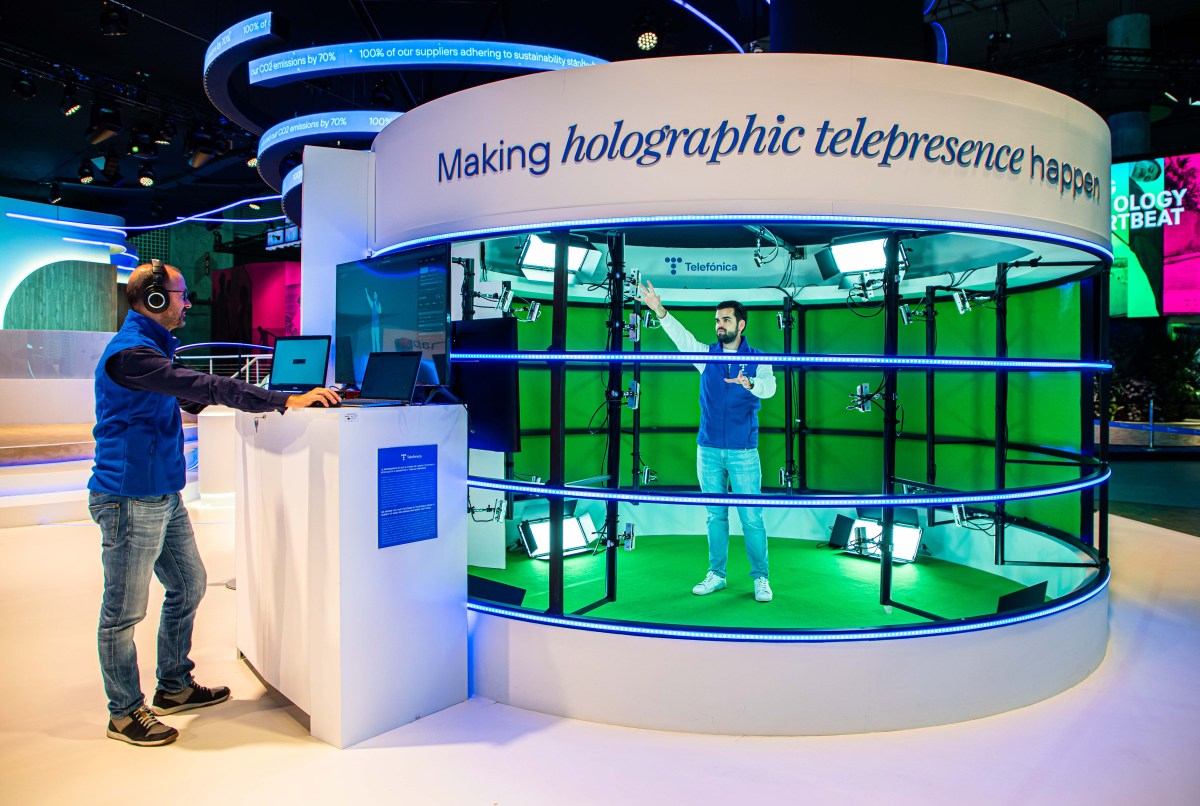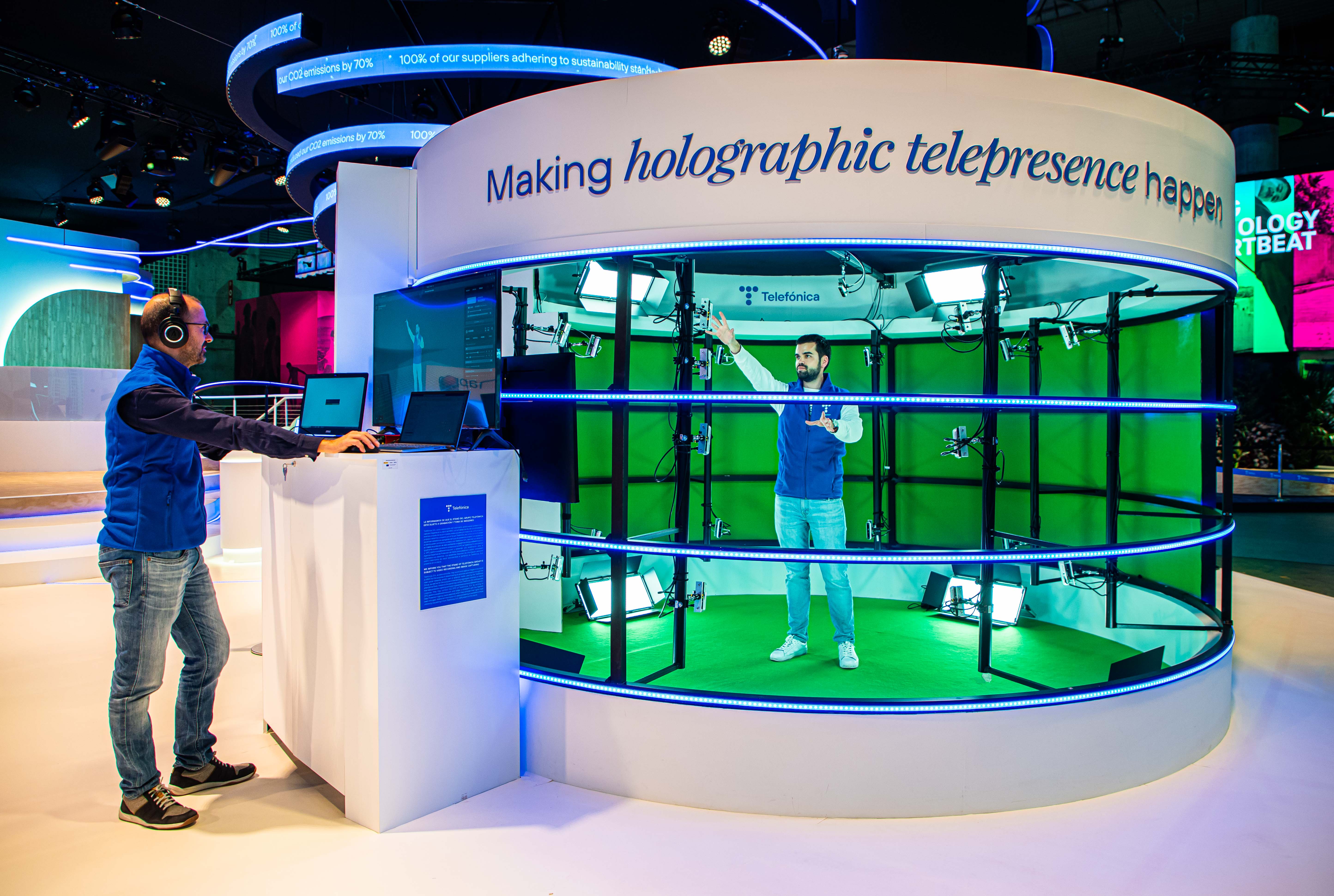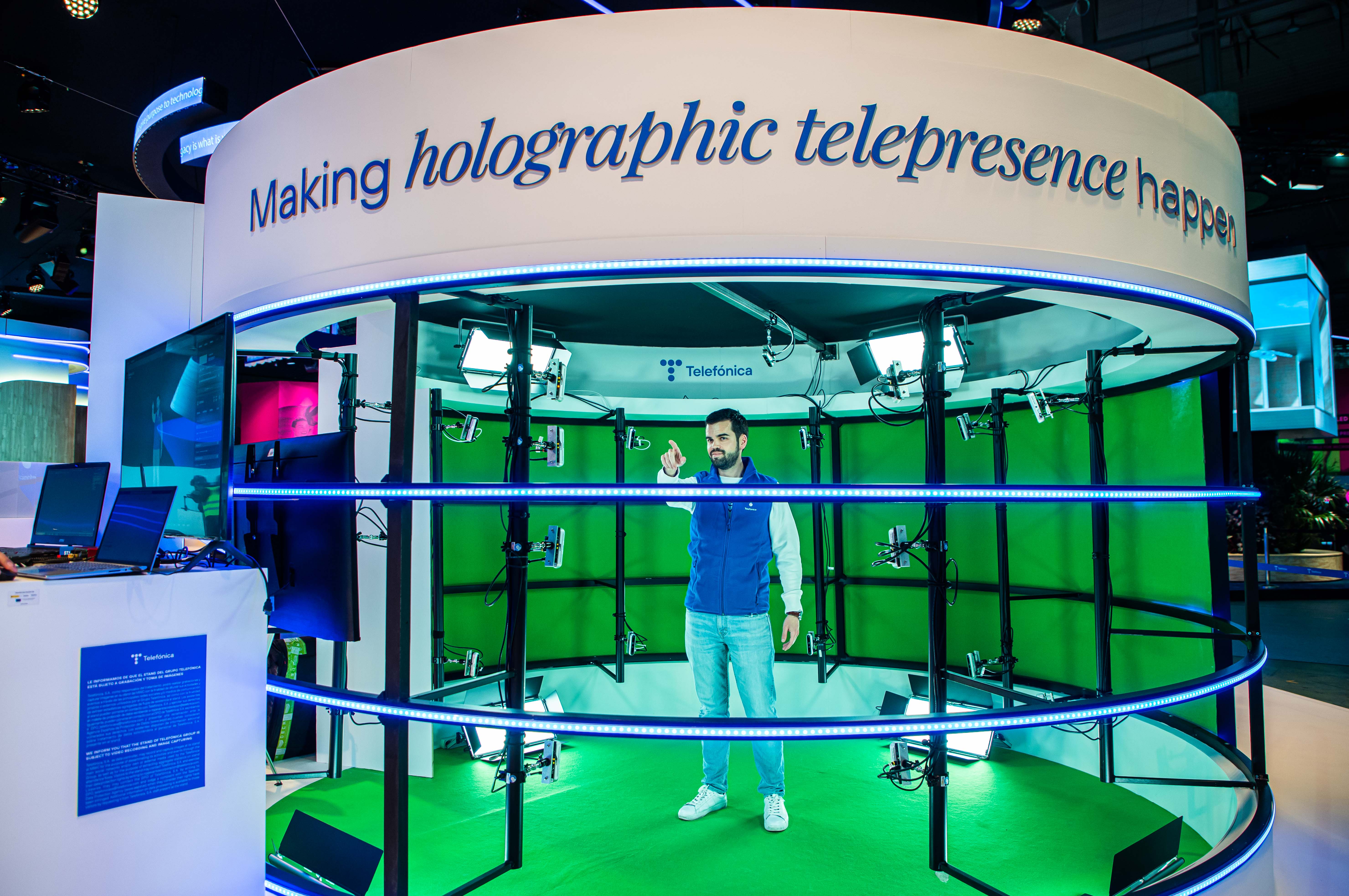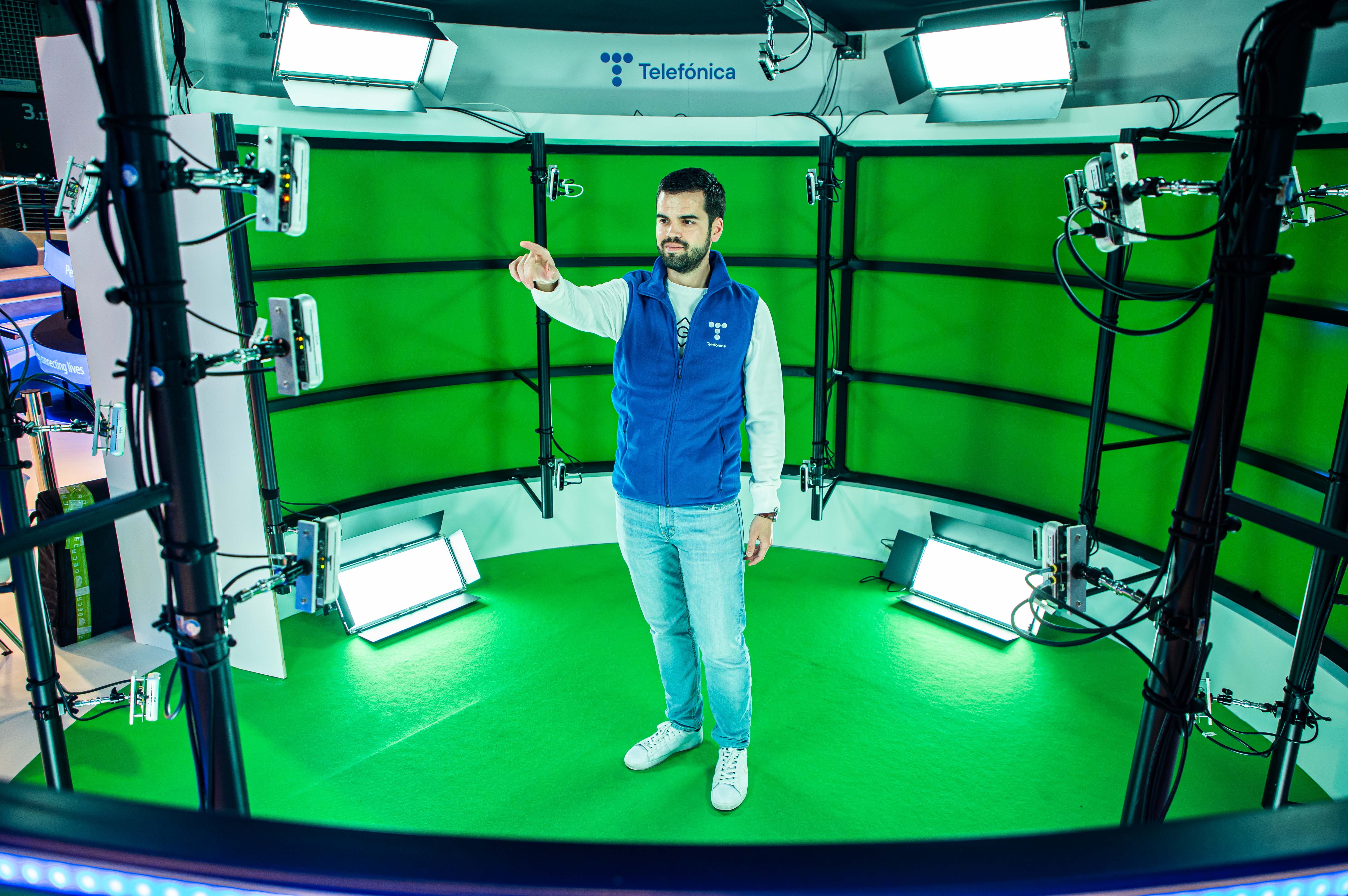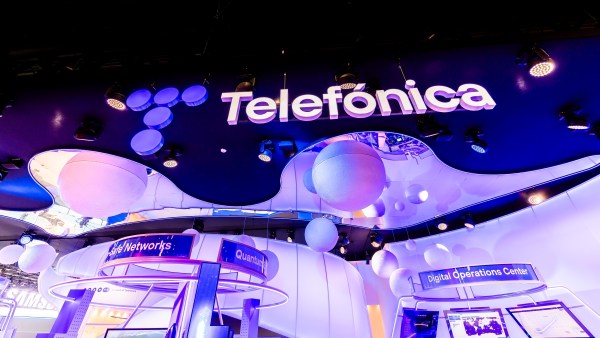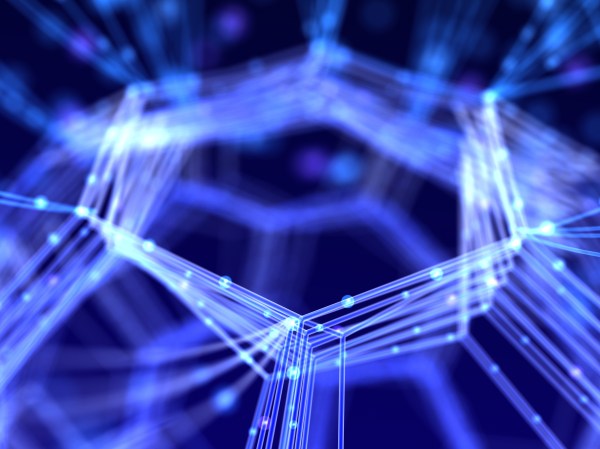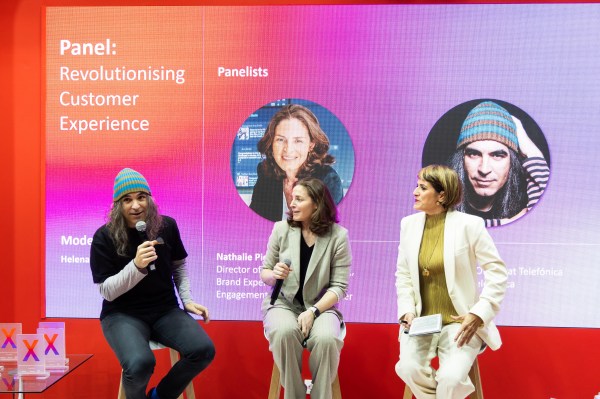Telefónica is exhibiting its 3D holographic telepresence system at the Mobile World Congress (MWC) with the demo ‘Making Holographic Telepresence happen’, based on Fiber, 5G and Edge Computing technologies.
The company’s booth houses at its heart a volumetric capture room that visitors can access, and instantly see how to become a 3D avatar, and be “teleported” in real time to augmented reality and virtual reality environments with different scenarios, being able to appreciate the result on tablets and screens of the stand.
Telefónica enables a complex scenario that relies on three of its capabilities such as fiber communications, 5G and Edge Computing. The technologies follow one another to achieve a 3D augmented reality experience. The capture and generation of a volumetric video involves massive amounts of information that are processed locally in a first instant to generate a 3D avatar of the person in real time, which can then be used in two ways: in live volumetric streaming or for recordings.
The first step involves Telefónica’s fiber, both to send the volumetric live stream and to upload the recordings to the Edge, which can occupy up to 20 Gbps for 30 seconds of recording. In a second step, the Edge centers process this massive information, both for live telepresence applications, which need to be accessible with virtually no delay, and for rendering or generating high-quality recordings that can then be viewed at any time. Finally, 5G is the ideal communications medium for accessing these volumetric videos from tablet, mobile or virtual, augmented or mixed reality glasses.
Leonor Ostos, Innovation Manager at Telefónica Spain, explains: “This has been a very demanding use case with multiple applications in the world of training, entertainment, business collaboration, advertising or TV, and where we have combined and tested several of the latest technologies offered by Telefónica, such as high bandwidths of fiber for massive uploads of information, low latency cloud computing thanks to Telefónica Tech’s Edge Computing service, and 5G as the ideal means of access for augmented, virtual, mixed or metaverse reality applications.”
For the demo ‘Making Holographic Telepresence happen’ it was necessary to install a volumetric capture room at the Telefónica stand with 21 Intel RealSense depth cameras, which generate between 60 and 70 gigabits of raw data that are processed on a local server with Evercoast software, which is the architect of the real-time generation of volumetric video. Evercoast’s technology allows these volumetric videos to be inserted into any augmented reality environment, 3D engines or web environments for viewing.
Ben Nunez, CEO of Evercoast, adds that: “Evercoast offers a highly scalable, ultra-low latency, real-time 3D holographic telepresence solution ranging from small scale setups to larger studio implementations like what Telefonica is demonstrating at MWC. Evercoast’s solution also includes the ability to record and render high resolution versions of 3D humans in full motion, and with Telefonica’s unparalleled 5G performance, we can deliver both live and pre-recorded 3D volumetric video to mobile phones, augmented reality, virtual production, and game-engine environments.”
Finally, the collaboration with Amazon Web Services (AWS) provides AWS Edge services connected to Telefónica’s network which, together with the AWS Europe (Spain) Infrastructure Region in Aragón, play a fundamental role in the use case, as they allow enjoying live holographic streaming and enable the massive rendering computation used in the processing of the recordings.
Advantages of telepresence in a 360º environment
The relevance of holographic telepresence lies in the multiple utilities and possibilities it offers, since the 3D figure, once captured in the volumetric room, can be integrated in real time into any virtual, augmented or mixed reality environment, including any of the most popular 3D engines or web environments.
This experience allows, no matter where the person is, to transfer his or her volumetric image to any virtual environment, be it a meeting room or a live event, thanks to the realistic sensation of presence. Moreover, being able to interact in real time, the experience is applicable to, for example, among many other utilities, holographic presentations, immersive education, collaborative tools, interviews in virtual studios, celebrity visits, personalized avatars or virtual guides.
For more information: Telefónica at MWC 2023
